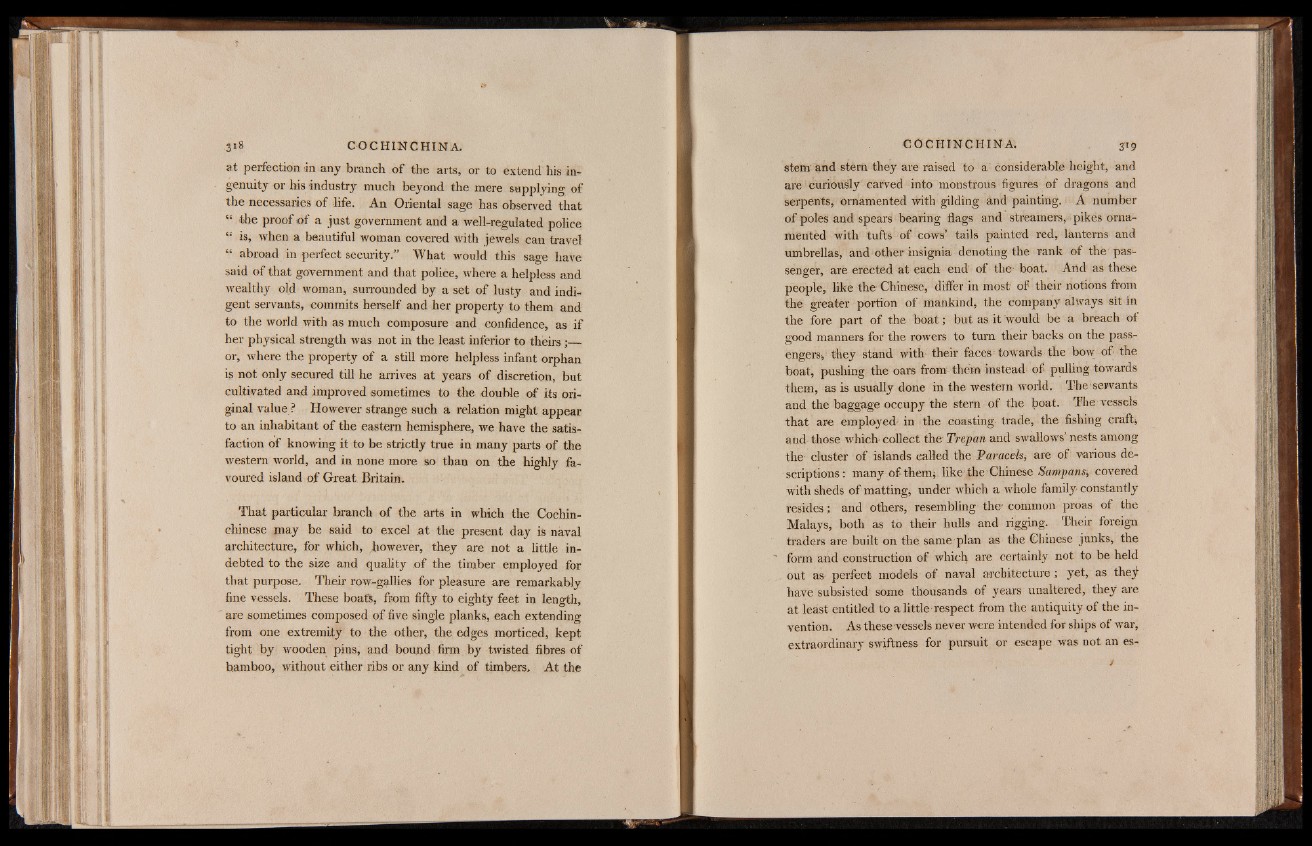
at perfection >in any branch of the arts, or to extend his ingenuity
or his industry much beyond the mere supplying of
the necessaries of life. An Oriental sage has observed that
“ the proof o f a just government and a well-regulated police
“ is, when a beautiful woman covered with jewels can travel
“ abroad in perfect security." What would this sage have
said of that government and that police, where a helpless and
wealthy old woman, surrounded by a set of lusty and indigent
servants, commits herself and her property to them and
to the world with as much composure and confidence, as if
her physical strength was not in the least inferior to theirs ;—
or, where the property of a still more helpless infant orphan
is not only secured till he arrives at years of discretion, but
cultivated and improved sometimes to the double of its original
value ? Howeyer strange such a relation might appear
to an inhabitant of the eastern hemisphere, we have the satisfaction
of knowing it to be strictly true in many parts of the
western world, and in none more so than on the highly favoured
island of G reat Britain.
ml
That particular branch of the arts in which the Cochin-
ehinese may be said to excel a t the present day is naval
architecture, for which, however, they are not a little indebted
to the size and quality of the timber employed for
that purpose. Their row-gallies for pleasure are remarkably
fine vessels. These boat's, from fifty to eighty feet in length,
are sometimes composed of five single planks, each extending
from one extremity to the other, the edges morticed, kept
tight by wooden pins, and bound firm by twisted fibres of
bamboo, without either ribs or any kind of timbers. At the
stem and stern they are raised to a considerable height, and
are curiously carved into monstrous figures of dragons and
serpents, ornamented with gilding and painting. 1 A number
of poles and spears bearing flags and streamers, pikes ornamented
with tufts of cows’ tails painted red, lanterns and
umbrellas, and other insignia denoting the rank of the passenger,
are erected at each end' of the boat. And as these
people, like the Chinese, differ in most of their notions from
the greater portion of mankind, the company always sit in
the fore part of the b o a t; but as, it would be a breach of
good manners for the rowers to turn their backs on the passengers,
they stand with their faces towards the bow of the
boat, pushing the oars from them instead of pulling towards
them, as is usually done in the western world. The’servants
and the baggage occupy the stern of the boat. The-vessels
that are employed' in the coasting trade, the fishing craft*
and those which- collect the Trepan and swallows’ nests among
the cluster of islands ealled the Paraceis* are of various descriptions:
many of them* like-the Chinese Sampans, covered
with sheds of matting* under which a whole family constantly
resides; and others, resembling the' common proas of the
Malays, both as to their hulls and rigging. Their foreign
traders are built on the same plan as the Chinese junks, the
form and construction of which are certainly not to be held
out as perfect models of naval architecture; yet, as tfieji
have subsisted some thousands of years unaltered, they are
at least entitled to a little respect from the antiquity of the invention.
As these vessels never were intended for ships of war,
extraordinary swiftness for pursuit or escape was not an es